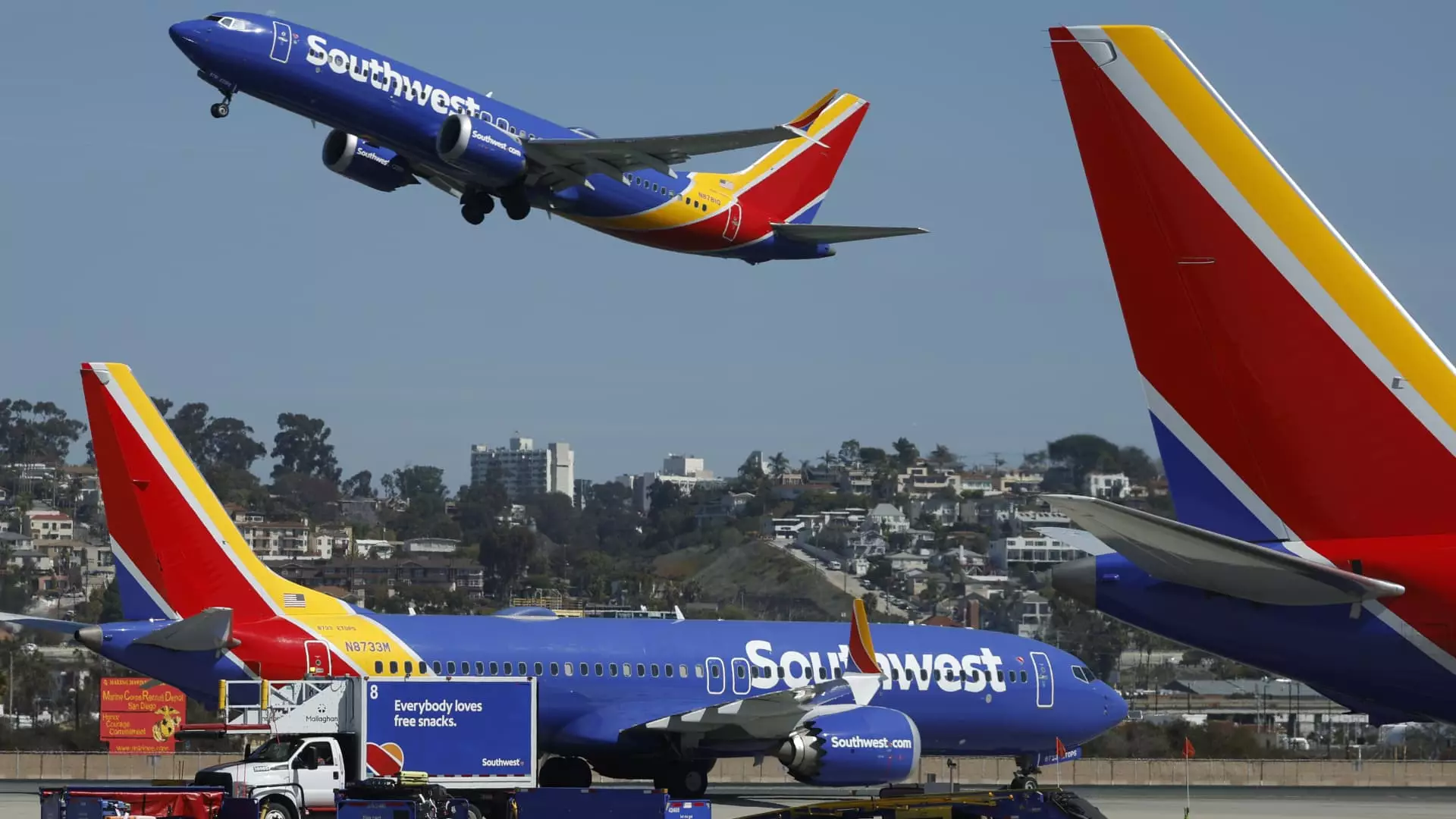In an audacious bid to reshape its identity, Southwest Airlines is setting its sights on a radical transformation that seeks to elevate the customer experience while preserving the hallmark values that have long defined the airline. The announcement from CEO Bob Jordan reflects not just a response to pressures from both competitors and investors, but a significant shift in strategy designed to attract high-spending travelers typically courted by legacy airlines. With plans for airport lounges, premium seating, and possible international routes on the horizon, Southwest appears ready to do more than just dip its toes into luxury; it aims to dive headfirst into an entirely new market.
This evolution is not merely cosmetic. For years, Southwest’s no-frills model has been an exemplar of low-cost flying, characterized by open seating, a single cabin class, and the coveted two free bags for each passenger. Yet, with a shifting landscape in air travel and faltering demand, Jordan’s admission that “we won’t take any of that off the table” signals that the airline may abandon cherished principles to stay relevant in a changing marketplace. This pivot is both a pragmatic response to economic uncertainty and a necessary strategical evolution for the long-term viability of the airline.
Competitive Pressure and Customer Expectations
In the modern flight landscape, Southwest is no longer insulated from the competitive tide driving many airlines toward a premium experience. Rivals such as Delta, American, and United have aggressively upgraded their offerings with luxury lounges, spacious seating, and far-reaching international routes. Southwest’s previous models, while unique, are increasingly vulnerable as customers crave options that combine affordability with comfort and exclusive amenities. The irony, however, lies in the realization that while Southwest may have segregated itself from its competitors, customers now find themselves being lured elsewhere for amenities that Southwest cannot currently offer.
Nashville International Airport presents a vivid case study in this competitive landscape. The city boasts a loyal customer base that not only values Southwest but is simultaneously seeking new options that offer the luxury amenities currently missing from their flights. Jordan himself noted the dichotomy: “I want to send fewer and fewer customers to another airline.” This declaration points to a broader challenge that airlines face—balancing brand identity with customer satisfaction amid an increasingly crowded marketplace of choices.
Rethinking the Fleet: A Long-Term Vision
Part of the strategic redirection involves reconsidering the aircraft in Southwest’s fleet. The Boeing 737 has served the airline well for decades, but as Jordan hinted, the future may bring a need to expand beyond this restriction. The idea of introducing long-haul flights to Europe raises an essential question about the adaptability of a traditionally regional carrier. Can Southwest, which has long prided itself on efficiency and simplicity, successfully introduce the complexity that comes with global travel?
While partnerships such as those with Icelandair and China Airlines showcase Southwest’s willingness to explore international opportunities, the prospect of the airline itself operating transatlantic flights is still a radical step waiting for validation. The path forward is paved with logistical, regulatory, and financial challenges that must be navigated carefully, but the willingness to consider this future is a sign of the evolving landscape of air travel.
A Balancing Act of Innovation and Tradition
Ultimately, the crux of Southwest’s transformation lies in how successfully it can blend its traditional values with the burgeoning luxury trend. The airline’s reputation for customer service and affordability has been its hallmark, yet the pressing need for evolved offerings necessitates a willingness to adapt. The notion that Southwest can remain the “friendly skies” while simultaneously satiating high-end travel demands is an intricate balancing act fraught with risks.
Furthermore, the presentation of new amenities doesn’t just involve financial investment, but also a cultural rebranding within the company itself. As it seeks to attract wealthier clientele, how will Southwest maintain its identity as a low-cost airline? The potential consumer backlash from loyalists who fear the loss of affordability for the sake of luxury must not be underestimated.
In this transformative juncture, Southwest stands at a critical crossroads, driven by the relentless pursuit of competition yet tethered to its roots. Embracing change without losing its essence may prove to be one of the most formidable challenges the airline faces as it ventures into this new frontier of air travel.


Leave a Reply